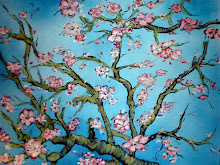

I was so surprised and excited about how many female artists were exhibiting in the Whitney Biennial this year! I felt that the entire exhibition was very intimate and, for some reason, I was really drawn to a lot of the works created by the female artists of the exhibit.
Stephanie Sinclair's Self- Immolation in Afghanistan: A Cry for Help (2005) was an extremely graphic and emotional piece. This work consisted of a series of 9 photographs of young women being treated for self-inflicted burns. These women set themselves on fire in acts of utter desperation to escape the prolonged abuse from their husbands or families. ( After reading about her work, I later discovered that many of these women are the child brides of arranged marriages in Afghanistan) The piece is extremely moving because of its raw graphic content. Through the photographs Sinclair tells the story of these women's struggle. In the photographs she uses selective focus to bring the viewer in and out of the image, she also aligns them horizontally, at eye level, across the entire room. As you stand there, surrounded by images of women in their most vulnerable state, you can't help but feel the emotions beaming through the photographs. This piece is very much about the bravery of these women as well as their suffering, it represents and exposes the violence against women that occurs everyday. I thought the piece was really well done, not just the images, but the story and message the images tell was extremely moving and inspirational to me. Kate Gilmore's work Standing Here (2010) was also really compelling to me. As I first walked into the room I notice the huge white box, made out of sheet rock, with big holes all over it. Then I noticed the large projection on the wall next to it, which is a video of the artist kicking and punching holes from the inside of the box in an attempt to climb out of it. This piece was so interesting to me, not because of the physical objects that made up the piece, like Sinclair's work, but because of the concept behind the work. The physical objects of the work, I thought, were much less important than the concept. Similar to Sinclair's photographs, Gilmore's work deals with the struggle of women, however, in a very different way. This piece acts as a metaphor for the conflicts and obstacles women face in todays word. Rather than putting it right in your face, like Sinclair's piece does, Gilmore's work forces the viewer to look further into the piece and really think about it. The artist overcomes the limitations of her female clothing, heels, pantyhose, and a polka-dot dress, and uses her sheer muscle power and determination to break out of a self-constructed obstacle. Both of the works address female identity and struggle but in two very different ways. When I was viewing the works, each piece rose different questions in my mind, however, both had me thinking about the struggles and strength of women. I found them both to be very successful in the way they were created and presented.

No comments:
Post a Comment